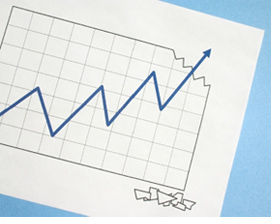Generally, you can identify the direction of your business based on performance. Depending on your industry, performance can be measured any number of ways. What’s most important is that someone is paying attention to this data to help your team identify trends.
In our nation and communities, leading indicators is data that we measure. This data tell important things about the market, such as changes in the number of people employed, the number of building permits governments offer, number of claims, and so on.
Often, our government leaders make decisions about when to raise interest rates, for instance, based on these benchmarks. Why? They provide more insight on the economy’s performance than simply watching the stock market.
Business owners can also use indicators to help make educated and informed decisions about the direction of their company—and then make adjustments to stay on-track with strategies and profit margins. The best way make the right decisions is to keep meticulous records of your performance.
Profits at the end of the month certainly tell us something about how well we are doing business, but at the end of the month the numbers are all in and there is nothing that can be done to adjust them. However, we can get valuable insight by tracking and monitoring key data as it comes in each day. Waiting until the end of the month or quarter is too late—way to late!
Michael Gerber, a well-known small business coach, once said, “You can’t manage what you can’t measure.” Few phrases in business have never been truer.
Small and medium size businesses (SMBs) can draw many important conclusions about performance and predict outcomes by keeping track of simple data such as the number sales calls and inquiries, the number of hours employees spend working on projects, and the various measurements obtained through sales data.
A key indicator has to be tangible and quantifiable. For example, you might consider measuring the number of calls it takes to get an appointment as well as the number of appointments to present a proposal. From this point you can determine the number of accepted proposals.
Now, you will know that it will take 10 phone calls a day to get two appointments and with a closing ratio of 50 percent your firm will make a sale. The leading indicator therefore is the 10 phone calls a day.
Imagine if your sales team fails to meet this number every day. You won’t be surprised at the end of the month because leading indicators should have alerted you of the negative performance.
Key performance indicators should, of course, be customized to your industry and business.
Knowing what to measure and adjusting your strategy on an ongoing basis is far more important that blinding “driving in the dark.” When you measure and monitor key performance indicators, you have the power to change the output and direction of your business.
Data keeping can be a very meticulous and time-consuming process; however, doing so gives you a much better idea on where you stand and how to prevent being “surprised” at the end of your current billing/sales period.





